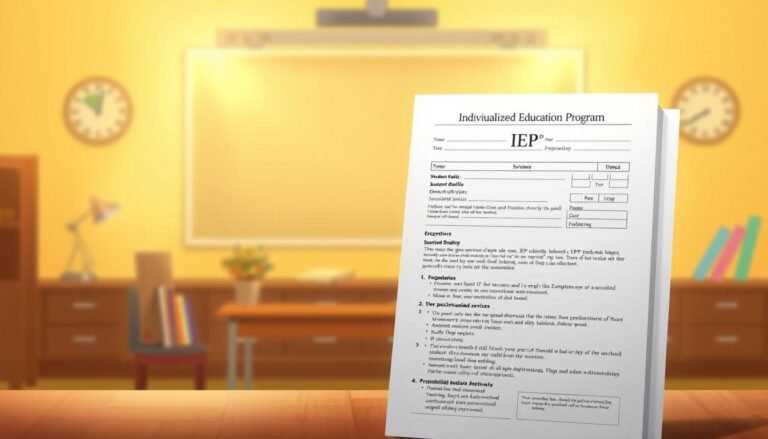
Breaking Barriers: Understanding Learning Disabilities and Your Child’s Unique Needs – The Ultimate Guide
Introduction
Imagine walking into a room filled with children, all eager to learn, but your child stands apart, struggling to keep up. This scenario is all too familiar for many families navigating the complex terrain of education. Learning disabilities affect approximately 1 in 5 children, according to the National Center for Learning Disabilities. Yet, the topic remains shrouded in misunderstanding and stigma. Breaking barriers and fostering a deeper understanding of learning disabilities can empower parents, educators, and communities to provide better support for children facing these challenges.
In this comprehensive guide, "Breaking Barriers: Understanding Learning Disabilities and Your Child’s Unique Needs," we aim to illuminate the path for understanding these disabilities and addressing your child’s individual needs. Together, we will explore the definitions, signs, interventions, and success stories that can transform not only your child’s academic journey but also their overall well-being.
Understanding Learning Disabilities
What Are Learning Disabilities?
Learning disabilities (LD) refer to a variety of disorders that impact the ability to understand or use spoken or written language, perform mathematical calculations, or process information effectively. They are not indicative of intelligence; in fact, many children with learning disabilities have average or above-average IQs. Understanding this distinction is crucial as we begin the journey of breaking barriers in society’s perception of learning disabilities.
Key Types of Learning Disabilities
- Dyslexia: Difficulty with reading, which may involve challenges in phonemic awareness, decoding, and fluency.
- Dysgraphia: Affects writing abilities, making it challenging to express thoughts on paper.
- Dyscalculia: Concerns difficulty with understanding numbers or mathematical concepts.
- Auditory and Visual Processing Issues: Challenges in how information is received and processed from sensory inputs.
By understanding these varieties of learning disabilities, caregivers can cater to their child’s unique requirements more effectively.
Signs and Symptoms
Early detection is crucial in managing learning disabilities effectively. Here are some common signs to look out for:
- Dyslexia: Difficulty reading aloud, trouble with spelling, and struggles in understanding reading assignments.
- Dysgraphia: Handwriting that is hard to read, trouble organizing thoughts in writing, and avoidance of writing tasks.
- Dyscalculia: Difficulty recalling basic math facts, problems with counting, and challenges learning number concepts.
- Auditory/Visual Processing Issues: Difficulty following spoken instructions or interpreting visual cues.
Case Study: A Journey with Dyslexia
Student: Alex, age 10
Background: Alex is a bright, energetic boy who loves sports but struggles significantly in reading. His mother first noticed his difficulties in the second grade when he couldn’t recognize sight words that his peers had mastered.
Intervention: After consulting with an educational psychologist, Alex’s mother enrolled him in a specialized tutoring program focusing on phonemic awareness and multisensory learning techniques.
Outcome: Within a year, Alex’s reading skills improved dramatically, resulting in better grades and increased confidence. He now confidently reads with his friends while still embracing his passion for sports.
Analysis: Alex’s journey reflects the power of tailored intervention. Understanding learning disabilities and taking proactive steps can enable children to overcome their challenges and succeed academically.
Breaking the Stigma: Education and Awareness
Why Education Matters
In our quest for breaking barriers, education about learning disabilities is vital. Misunderstandings can lead to stigma, which impedes children from seeking help and fully participating in their education. Communities must prioritize awareness initiatives that shed light on the realities of learning disabilities.
How Schools Can Implement Change
- Training for Educators: Teachers should receive professional development that addresses learning disabilities, helping them recognize signs early.
- Creating Inclusive Classrooms: Schools can foster an environment where diverse learning needs are respected and valued.
The Role of Families
Parents play a pivotal role in advocating for their children. Open communication with schools, understanding your child’s unique needs, and being advocates for necessary accommodations are vital.
Tips for Parents
- Stay Informed: Familiarize yourself with various learning disabilities and resources available.
- Communicate with Teachers: Establish a partnership with your child’s educators to ensure they are aware of your child’s needs.
- Encourage Strengths: Focus on your child’s strengths and interests outside of academics, cultivating a sense of success in other areas.
Case Study: Advocacy in Action
Family: The Johnson Family
Situation: The Johnsons discovered their daughter Mia had dyscalculia in the third grade. Initially, they felt overwhelmed and unsure where to turn for assistance.
Action: The family attended workshops on learning disabilities, seeking resources and support groups. They worked closely with Mia’s teachers to implement Individualized Education Programs (IEPs) that catered to her learning style.
Outcome: Mia not only saw improvements in her math skills but also gained confidence in her abilities. The Johnson family empowered themselves through advocacy and knowledge, showcasing how vital family engagement is in breaking barriers.
Analysis: The Johnson family’s proactive engagement illustrates the effectiveness of informed advocacy and a collaborative approach between families and educational institutions in addressing learning disabilities.
Strategies for Helping Your Child
Individualized Learning Plans
Every child is unique, and learning approaches must reflect this. Implementing an Individualized Education Program (IEP) is often recommended for children diagnosed with specific learning disabilities.
| Key Components of an IEP | Description |
|---|---|
| Learning Goals | Specific academic targets tailored to the child’s abilities. |
| Accommodations | Adjustments in teaching strategies, assessment formats, and classroom environments to support learning. |
| Assessment Methods | Ongoing evaluation techniques to track progress and adapt as needed. |
Home Strategies
In addition to school-based interventions, families can employ various strategies at home to reinforce learning.
Creating a Supportive Environment
- Establish a quiet, organized study area conducive to learning.
- Use visual aids, such as charts and diagrams, to help clarify concepts.
- Break tasks into smaller, manageable steps, highlighting progress.
Building Skills Through Play
Incorporating play into learning can foster development unconsciously. Use games that promote reading or mathematics skills or involve activities that encourage problem-solving.
Case Study: Creative Learning
Student: Jamie, age 8
Challenge: Jamie has dysgraphia. Writing tasks are laborious and frustrating, impacting his ability to complete assignments.
Intervention: His parents introduced special writing tools and software designed for children with learning disabilities. They also integrated engaging storytelling activities that sparked Jamie’s interest in writing.
Outcome: Jamie began to express himself creatively, significantly alleviating his frustration. His grades improved, and he often shared vibrant stories with his family.
Analysis: This case exemplifies how tailored tools focused on a child’s interests can surmount challenges posed by learning disabilities, thus breaking the barriers to learning and expression.
The Importance of Emotional Support
Building Resilience
Children facing learning disabilities may struggle with self-esteem and frustration. Emotional support from parents and educators is essential to help children develop resilience.
Techniques for Boosting Confidence
- Celebrate Small Achievements: Recognize even minor victories along the academic journey.
- Encourage Peer Support: Foster relationships with classmates to ensure inclusivity and support.
- Promote a Growth Mindset: Instill the belief that intelligence and skills can be cultivated through effort and perseverance.
Case Study: Emotional Growth
Student: Emily, age 12
Background: Emily had faced bullying due to her learning disability, leading to anxiety about school.
Intervention: After counseling and involving supportive friends, Emily’s self-esteem grew. Her family encouraged her to join an art club, allowing her to express her creativity.
Outcome: Emily became more confident in her academic endeavors, participating actively in class discussions. The supportive atmosphere created a space for her to excel.
Analysis: Emily’s story highlights the need for emotional and social support in conjunction with academic interventions, helping children perceive their learning disabilities through a lens of opportunities rather than obstacles.
Conclusion
Breaking barriers and understanding learning disabilities is a journey, but every step taken empowers both children and their support systems. Emphasis on early detection, education, emotional support, and tailored interventions can transform the narrative around learning disabilities.
Creating an inclusive society that embraces diversity in learning paves the way for children to flourish academically and personally, enabling them to unlock their full potential.
Actionable Insight
As a parent, teacher, or community member, you hold the potential to make a significant difference. Consider advocating for awareness in your community and raising funds for special education programs. It takes a village to champion these causes, and your efforts can help dismantle the barriers surrounding learning disabilities.
FAQs
What should I do if I suspect my child has a learning disability?
- Start by contacting your child’s teacher and discussing your concerns. Seek assessments from educational psychologists for a comprehensive understanding.
Are learning disabilities inherited?
- There is a genetic component to many learning disabilities, as they can run in families. However, environmental factors also play a significant role.
What resources are available for parents?
- Many organizations, such as the Learning Disabilities Association of America, offer resources, support groups, and educational workshops for parents.
Can children with learning disabilities succeed in school?
- Absolutely! With appropriate support, understanding, and intervention, children with learning disabilities can excel academically and socially.
- What is the difference between a learning disability and a learning difficulty?
- Learning disabilities are neurological disorders impacting the ability to learn specific academic skills. In contrast, learning difficulties refer to challenges that arise from external factors such as lack of motivation or poor teaching.
By embracing knowledge and compassion, we can create an accessible world where every child has the opportunity to thrive. Together, let’s embark on the mission of breaking barriers: understanding learning disabilities and your child’s unique needs!
















